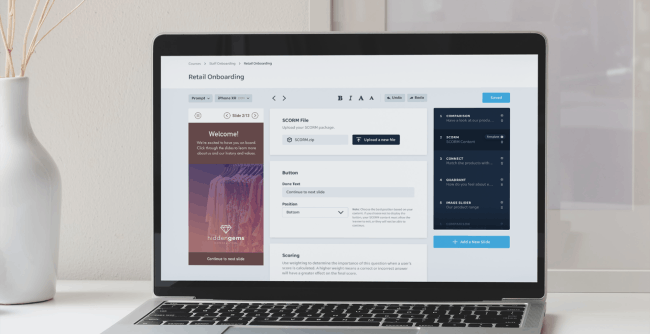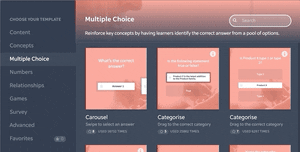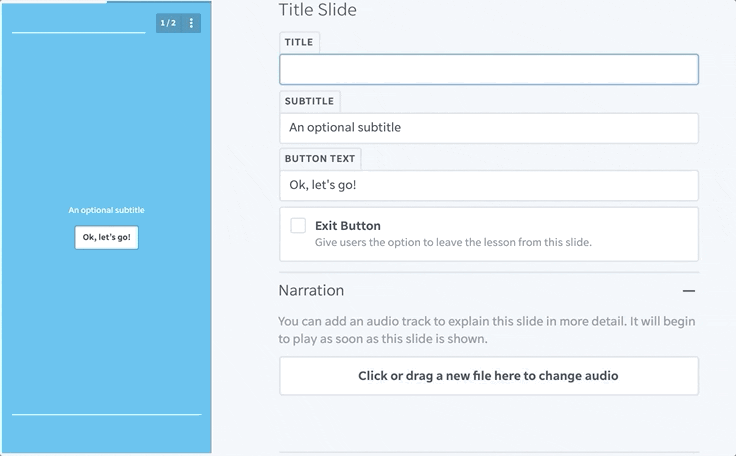Why a rapid authoring tool is increasingly needed in today’s workforce

Rapid Authoring Tool
One of the buzzword phrases of the eLearning genre is a rapid authoring tool. If you are not sure exactly what this is, perhaps pop over to this article and find out. The question is, “Why is it talked about so often? In other words, why is rapid authoring increasingly needed in today’s workplace?”

The reason is the exponential (really, really fast) rate of change
This rate applies to the acceptance of technology AND the technology itself.
Acceptance of technology: Landline vs. the color TV
I found an excellent visual aid at the Visual Capitalist website. I encourage you to check it out and see more examples.
Landline
Households began having telephones in the 1880s. By 2002, 95% of U.S. households had landlines. It took over a century (100 years) for this to happen. (Then, the rate started dropping off due to the rise of mobile phones.)
Color TV
People began buying color TVs in 1966. By 1990, 96% of U.S. households had color TVs. It took just ¼ of the time (24 years) for that to happen. (And the rate has remained more or less constant since then.)
Why the big difference?
It takes time for people to accept new technology, especially if they are born during a time without it. The more people are used to technology, and the closer the new technology is to the old kind, the faster it is accepted. By the time the color TV came around, people could already buy other household appliances such as stoves, vacuums, refrigerators, and washing machines. So, the color TV was not that big of a leap.
Rate of change of the technology itself
The 2018 Technology and Innovation Report by the United Nations Conference On Trade And Development (UNCTAD) does a good job of speaking to this point. The report mentions three factors: building blocks, convergence, and falling costs.
Building blocks
New technologies rest on the bases of previous ones. The more different kinds of discoveries and technological developments there are, the more potential there is for further discoveries and developments.
Convergence
Digital platforms are bringing technologies together in ways that were not possible before. Only a short time ago, airline travel involved travel agents and paper tickets. Today, we book online and send the eTicket to our smartphones. And this is only the tip of the iceberg. Convergence is taking place across a wide variety of areas such as online shopping; personalized medical databases; computer-simulated testing of all kinds; clothing with embedded electronic devices which transmit data; and advanced gene sequencing.
Falling costs
The use of digital platforms has another benefit: in many cases, the marginal production costs are almost nothing. Think about reading. Printing books involves a lot of costly processes. Producing an eBook costs virtually zero.
In addition, the vanishing sizes of chips and transistors mean that much more power can be packed into a much smaller space. Currently, the smallest components measure roughly seven nanometers across (7 billionths of a meter). If you placed one red blood cell on a flat tray, you could make a row of 1000 of these components across the diameter of that cell (from the left side to the right side).
What does all this have to do with a rapid authoring tool?
Take a deep breath: The material you have created today is (almost) obsolete.
Sorry, but it’s true.
So, if it takes 6 months to create a course and another 6 months for your learners to complete it, chances are that in those 12 months, the information and/or the technology about which you are educating/training your learners could have changed significantly.
Obviously, no one is expecting you to update your courses every week…yet.
What is expected, though, is that your material is current. This means you should be able to make tweaks on an “as needed” basis when things change such as:
- Updated guidance by the Department of Transportation about their Drug Testing Custody and Control Form
- Changes to the advice given to online shoppers by the Federal Trade Commission
- New words and evolving meanings of existing words connected to branding and marketing
Prior to rapid authoring, you would most likely have spent substantial time thinking of creative ways to teach and practice this information, not to mention any photocopying of work pages or creation of online activities. However, with rapid authoring, the creative task templates are ready. You just choose the one(s) you want, plug in your information and click SAVE.

And when things change, you just cut/paste the updated information—current content in minutes.
Since the rate of change is spiraling, it makes sense to get started with rapid authoring now.
Begin your rapid authoring “career” now.

Sources
https://unctad.org/en/PublicationsLibrary/tir2018_en.pdf
https://www.brandknewmag.com/20-words-for-2020/
https://www.consumer.ftc.gov/articles/0020-shopping-online
https://www.transportation.gov/odapc/Notice_CCF_August_2020#_ftn1
https://www.visualcapitalist.com/rising-speed-technological-adoption/
Author
